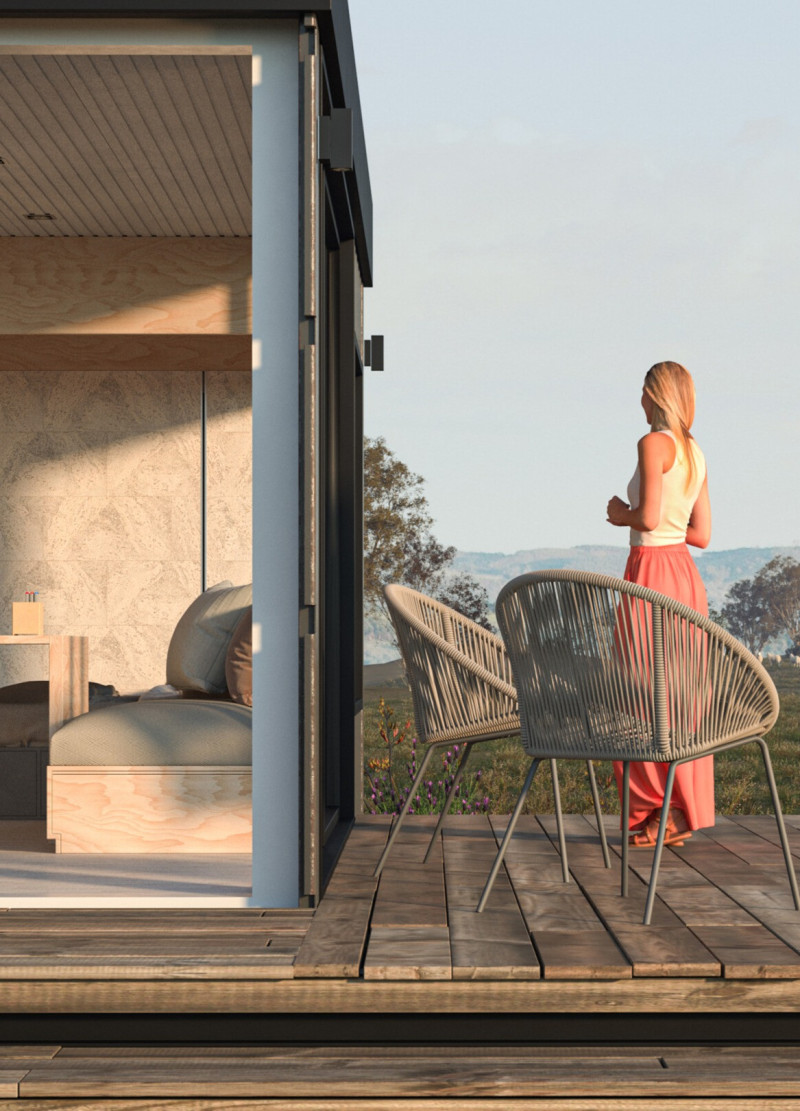5 key facts about this project
At its core, the project functions as a multi-purpose space designed to accommodate [specific uses such as residential units, commercial spaces, community facilities, etc.]. This diverse functionality reflects a modern understanding of urban living, where spaces are no longer confined to singular uses, but are integrated to enhance the daily experiences of its users. The architectural design embraces an open-plan concept, allowing for flexible configurations that can adapt over time as needs evolve. This adaptability is a key feature, ensuring longevity and relevance in a rapidly changing environment.
The architectural expressions found in this project are noteworthy for their clarity and simplicity. The exterior is characterized by clean lines and a harmonious blend of materials, including [specific materials used, such as concrete, wood, glass, and steel]. These materials are not only aesthetically pleasing but also selected for their durability and sustainability, highlighting a commitment to environmentally responsible design practices. For instance, the integration of large glass panels facilitates natural light, creating a bright and inviting atmosphere within. This choice also reduces the reliance on artificial lighting, further diminishing the building's carbon footprint.
One unique aspect of the project is its integration with the surrounding landscape. The design thoughtfully considers the topography, ensuring that the building does not impose on its setting but instead complements it. Landscaping features such as [mention specific landscaping elements like gardens, terraces, or green roofs] enhance this relationship, offering users a seamless transition between indoor and outdoor environments. This connection encourages occupants to engage with nature and fosters a sense of community, as outdoor spaces serve as gathering points for interaction.
Another distinguishing feature of this architectural project is the innovative use of space. The design incorporates elements such as [mention unique space configurations, like open courtyards or flexible multi-use areas], which not only maximize the usability of the interior areas but also promote a sense of transparency and flow. This fluidity is reinforced by the strategic placement of walls and partitions, allowing for various configurations while maintaining an overall sense of unity within the space.
Attention to detail is evident throughout the project, from the selection of finishes to the incorporation of technology. The materials used inside, such as [specific interior materials, like hardwood flooring or sleek countertops], enhance comfort and contribute to a cohesive aesthetic. Additionally, smart technology features have been embedded in the design, providing users with conveniences such as automated lighting and climate control, which optimize the building's efficiency.
Moreover, the architectural design reflects an understanding of social dynamics and community needs. By creating spaces that encourage collaboration and interaction, the project promotes a sense of belonging among its users. Elements such as communal lounges and shared workspaces are integral to the design, prompting social engagement and fostering a vibrant community spirit.
For those interested in exploring this project in more depth, including examining architectural plans, sections, and additional design details, I encourage you to review the full presentation. Delving into the architectural ideas and elements showcased will provide a clearer picture of how thoughtful design can shape environments that are not only functional but also enhance the quality of life for those who inhabit them. This project stands as a testament to the possibilities within contemporary architecture and serves as a reference for future developments aimed at enriching community and user experience.


























